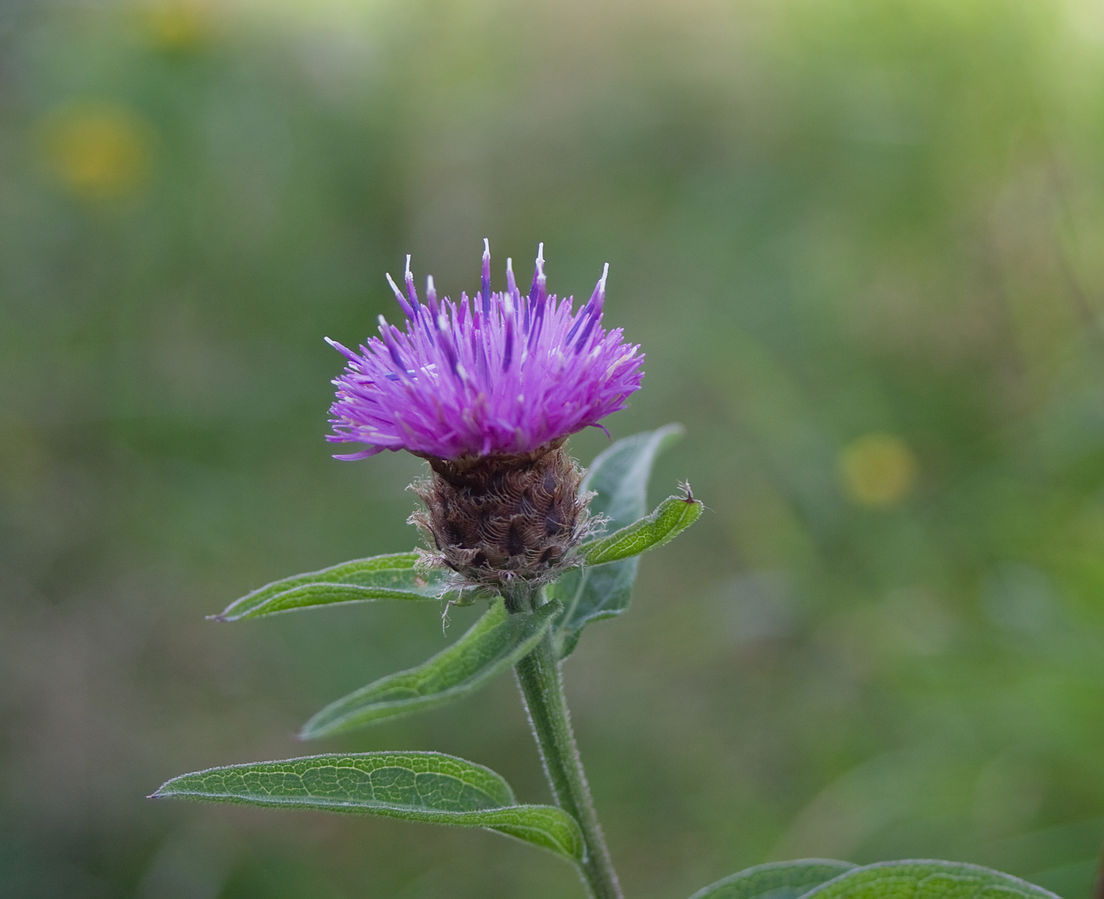Black Knapweed

Black Knapweed
(Centaurea nigra)
Priority: - Established / Strategic Control
Tags: Agricultural | Terrestrial
Identification and Reproduction
Identification:
- Black knapweed is also known as lesser knapweed. It is a tap-rooted perennial, growing up to 1.5 m tall.
- Stems grow upright and branched. They are covered in short hairs and will appear wooly in its first year.
- Near the base of stem, leaves are lance-shaped and attach to the stem with a leaf stalk. Leaves will decrease in size and lose leaf stalks moving up the stem.
- Thistle-like flowers that are purple and sometimes even white. Flowers are found singular at the end of the stems. Base of the flower is oval to globe shaped and covered in black to brown triangular bracts.
- It flowers between June and September.
Reproduction:
- Primarily reproducing from seeds
- Can also regenerate from stem and root fragments.
- Each plant can individually produce 18,000 seeds per growing season.
- Seeds are easily spread by wind, water, animals, machinery and soil movement.
- Seeds are viable for at least 5 years.
Habitat & Ecology
- Black knapweed is commonly invading meadows, grassland and roadsides.
- They thrive on moist and fertile sites.
Impacts
Ecological:
- It forms monocultures and suppresses the growth of native vegetation.
- Can increase runoff and erosion.
- Dead plant material can increase fire hazard.
- Can lead to permanent soil chemistry changes, through its allelopathic properties.
Management
Prevention is a high priority for this plant.
- Please report this weed if you think you have seen it.
- Clean all footwear, pets, equipment and vehicles when leaving an infested area.
- Remove plants immediately if found on property.
Mechanical/Manual Control:
- Dig or hand-pull out small infestations. Be sure to remove the roots in its entirety.
- If infestations are too large or if roots are well-establisehd consider cutting the plants prior to flowering. Try to cut the plants at least 3 cm below the ground.
- Ensure the clothing and footwear are clear of seeds after treatment.
- Treatments may need to be repeated for several years following.
Resources
Download the Capital Region Invasive Species Program's factsheet on Black Knapweed here.
Header photo (Fae).
Photo Gallery


×






